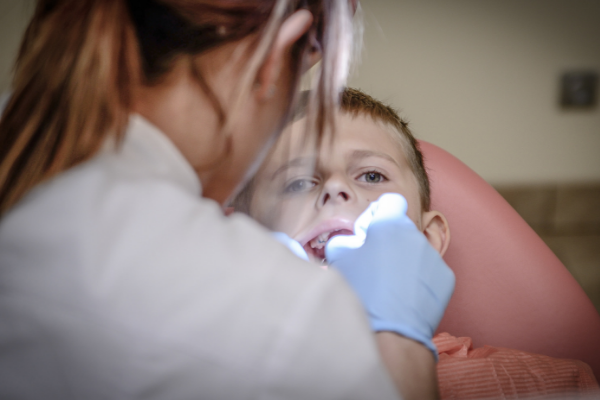Being a healthcare provider who does routinely prescribe narcotics and also being a mom, I have a unique perspective on the opioid epidemic. I perform surgeries that result in post-operative pain. I’m a nice person (as are most doctors), so I don’t want my patients at home, hurting. Studies show that a strict regimen of Tylenol and ibuprofen are just as effective as narcotics at controlling pain, yet I do still often prescribe opioids after surgery.
 Why? It’s multifactorial. Part of it is the patient expectation that after surgery, you need a “strong” pain medicine. Part of it is that some patients can’t take ibuprofen or other NSAIDs. Part of it is that patients usually don’t follow post-op pain management instructions well, and end up hurting. And part of it is because, well, narcotics work. However, since moving to the Miami Valley (where the opioid crisis is among the highest in the nation), I’ve significantly cut back my number of opioid prescriptions. I’ve educated both myself and my patients on responsible prescription practices. We talk about how to safely take them, when to take them, what to do with leftover pills, how to store them safely, risk factors for dependence and addiction, etc etc.
Why? It’s multifactorial. Part of it is the patient expectation that after surgery, you need a “strong” pain medicine. Part of it is that some patients can’t take ibuprofen or other NSAIDs. Part of it is that patients usually don’t follow post-op pain management instructions well, and end up hurting. And part of it is because, well, narcotics work. However, since moving to the Miami Valley (where the opioid crisis is among the highest in the nation), I’ve significantly cut back my number of opioid prescriptions. I’ve educated both myself and my patients on responsible prescription practices. We talk about how to safely take them, when to take them, what to do with leftover pills, how to store them safely, risk factors for dependence and addiction, etc etc.
It’s horribly tragic, but, as parents, we must be ever-vigilant of the possibility of drug use with our angelic, responsible children. A new study from the CDC shows that a 10-day course of narcotics leads to a 1:5 chance of long-term use. Let that sink in.
One in five people who, for any multitude of reasons, have taken a 10-day course of narcotics end up taking them for much, much longer than they should.
As a result of new knowledge, medical providers (including myself) have seriously cut back both the frequency and the amount that they prescribe. Even still, if your child has a procedure that requires narcotics for pain relief, know that (if your child is a minor), it’s your choice if they receive narcotics. Often, the first time your child is exposed to them is after wisdom tooth removal, which is also the time when kids are experimenting with lots of other things and when risky behaviors can be at their maximum. Because narcotics produce euphoria along with controlling pain, they are often abused.
It’s impossible to accurately predict who will develop dependence that can morph into addiction. We can talk about certain risk factors, but the reality is no one can know for sure who will or won’t develop an addiction. Talk to your healthcare provider about the risks. Ask for a shorter duration round of narcotics (I personally prescribe at most a 4 day supply). Have an open and honest conversation with your child about the realities of even just experimenting with narcotics. Keep the prescription locked up and be the only one to dispense it. Dispose of any leftover pills by taking them to your local police station.
Being in healthcare, I see my fair share of addicts, both active and recovering. The addicts are unmistakable-thin, gaunt faces, red-rimmed eyes, rampant dental decay (we call it meth-mouth), pale skin covered in needle marks, in “excruciating pain” and “allergic to ibuprofen”. The recovering ones are harder to spot-healthy complexions, normal body types, but they absolutely, 100%, do not want any sort of pain medication whatsoever.
And let me tell you, after 5 years in practice, there really is no cookie cutter mold for addicts.
They come in all shapes, ages, genders, socioeconomic status. Something they all have in common (and the one thing I’ve become more sensitive to since becoming a mom myself): they’ve got a mom out there, somewhere, worrying about them.
My heart goes out to the moms. I’ve met some of them. Some, in denial of what their child is going through. Some, completely in the dark. Not their son. Not their daughter. Some, aware and enabling. Others, aware and heartbroken by having to cut them off to try to save them. There are moms who no longer speak to their child, except when he lashes out during a hateful period of withdrawal, because they can’t allow themselves to be enablers, financially or emotionally.
It’s devastating to see them. My heart breaks for them.
I’ve had friends and acquaintances die from overdoses from all sorts of families-poor, drug-riddled families where you just kinda sadly shrug when you hear the news, as if it’s not shocking, to families who were well-off, loving, “normal”, where you just can’t quite process how that could happen.
It’s tragic that we as moms have to worry about heroin and fentanyl and OxyContin, but it’s naive to think it’s not out there. No, it’s more than naive. It’s stupid to not be aware of it as a possibility. Kids are exposed to it so early, and it’s normalized and glamourized. Think of the song “Mask Off” that was hugely popular last year. The lyrics are literally “Percocets. Molly. Percocets.” Camilla Cabella’s song “Never Be the Same” has the chorus where she sings about “nicotine, heroine, morphine”. And that’s just two songs off the top of my 30-year old, not-hip head. Things like that alone can peak curiosity. Curiosity leads to experimenting, leads to euphoria, leads to abuse, leads to dependence, leads to addiction.
Addiction is a sneaky disease. And believe me, it is a disease. It’s real and it surrounds us, especially in this area. It can sneak into any family. It’s certainly not an indictment on parenting or how a child is raised.
When I hold my daughter at night, I pray for (among many, many things) addiction to keep its deadly grasp off of her, and for me to be able to watch her through unfiltered, cautious eyes.
Resources:
 Why? It’s multifactorial. Part of it is the patient expectation that after surgery, you need a “strong” pain medicine. Part of it is that some patients can’t take ibuprofen or other NSAIDs. Part of it is that patients usually don’t follow post-op pain management instructions well, and end up hurting. And part of it is because, well, narcotics work. However, since moving to the Miami Valley (where the opioid crisis is among the highest in the nation), I’ve significantly cut back my number of opioid prescriptions. I’ve educated both myself and my patients on responsible prescription practices. We talk about how to safely take them, when to take them, what to do with leftover pills, how to store them safely, risk factors for dependence and addiction, etc etc.
Why? It’s multifactorial. Part of it is the patient expectation that after surgery, you need a “strong” pain medicine. Part of it is that some patients can’t take ibuprofen or other NSAIDs. Part of it is that patients usually don’t follow post-op pain management instructions well, and end up hurting. And part of it is because, well, narcotics work. However, since moving to the Miami Valley (where the opioid crisis is among the highest in the nation), I’ve significantly cut back my number of opioid prescriptions. I’ve educated both myself and my patients on responsible prescription practices. We talk about how to safely take them, when to take them, what to do with leftover pills, how to store them safely, risk factors for dependence and addiction, etc etc. 












Such a good perspective, Caitlin… and some super scary stats as well. I certainly hope more prescribers are educating themselves like you have!
Thanks Mallory! There has been a lot of education and more precautions taken by most prescribers, but unfortunately a lot of the damage is hard to undo. It’s a start! This topic is just really close to my heart. Dentists are often a last resort for addicts/abusers for drug-seeking, but we see a LOT of them.
Comments are closed.